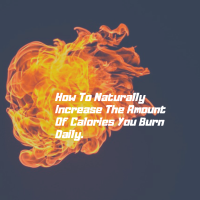Burning Calories is a big topic in the health and wellness industry.
There are so many different types of diets and supplements out there that claim to increase your metabolism that it can be absolutely confusing to decide what you should eat or what supplements you should take to provide your body with the proper nutrients needed to function normally.
There is nothing wrong with wanting to increase your metabolism by eating certain foods or taking supplements but it is important to do your research. Proper nutrition plays a vital role in our health. If you severely cut one nutrient for an extended period of time it can have negative consequences on your overall health, including your body’s ability to burn more calories.
When you focus strictly on cutting the quantity of calories without paying attention to the quality of your calories, it can lead to nutrient deficiencies which can ultimately lead to disease. The healthiest way to weight loss is a combination of a well-balanced diet and daily physical activity.
So let’s discuss a few key things you need to know to make sure you know WHY supplying your body with plenty of quality nutrients and daily physical activity is so important to your health.
Knowing the WHY, can help you ultimately reach your goals.
Total Energy Expenditure (TEE)
Your Total Energy Expenditure (TEE) is the total amount of energy or calories you burn on average in a typical day.
The following equation sums up your TEE (Definitions for each term provided below.)
TEE= RMR + TEF + Exercise
Resting Metabolic Rate (RMR):
Number of calories one burns in 24 hours while they are awake and at rest. This is the minimum amount of energy needed to keep the vital organs functioning. Allowing you to breathe, your heart to beat, your brain to work and your body temperature to remain normal. (There are tons of online calculators out there that can help you determine your RMR).
Thermic Effect of Food (TEF):
Energy expended to process food for storage and use by the body. Or in other words, the energy used to transport nutrients from the gut to the blood and to the rest of the body.
To put this equation in words your TEE is affected by:
- The number of calories your body will burn without any type of activity or your RMR.
- The number of calories your body will burn to digest and absorb nutrients or the TEF.
- The number of calories your body will burn through exercise or physical activity.
Increasing Each Variable of Your Total Energy Expenditure
Increasing your RMR:
While there are not a lot of things you can do to change this number as it is relatively constant, there is one thing in particular that can help to increase your RMR and that is to increase your fat free mass or lean muscle tissue. You see, lean muscle tissue has the ability to burn calories even while your body is at rest. So the more muscle you have the more calories your body will burn naturally. As we age, our RMR tends decrease not just because we get older but due to a steady decline in the amount of lean muscle mass we have.
In order to increase your lean muscle, you want to incorporate resistance training into your workout plan at least two times a week. Doing compound movements that work multiple muscle groups like squats, lunges, chest press, lat pull downs and back rows are a great way to increase lean mass. Over time, you want to slowly increase the amount of weight you use to help your body develop more lean mass.
Increasing the TEF:
In order to increase your TEF you need to focus on eating good quality food. Protein rich foods require your body to use more energy to digest them. Consuming lean meats, fish, eggs, nuts, beans and dairy can help to increase your TEF.
Another way to increase this number is to limit the amount of processed foods you eat. Processed foods have a significantly lower TEF than unprocessed foods. The reason for this is that processed food has already been partially broken down. As a result, the digestive system has less work to do, resulting in a lower TEF. In order to combat this, stick to eating fresh or frozen foods that have been minimally processed. Avoid boxed and canned foods as much as possible and be sure to read your food labels! If it has a million ingredients on the list and you can’t pronounce half of them then it is more than likely a processed food.
Increasing your Physical Activity:
Honestly, out of all three of the variables that affect your TEE, increasing your daily amount of physical activity has the biggest bang for your buck. This is the only part of the equation that you have complete control of! Any type of physical activity is better than no movement at all. Simply walking on a daily basis will help you to burn more calories. The amount of calories you burn from physical activity varies depending on the type (cardio, weights, etc.), intensity (how hard) and the duration (how long) you workout.
As you can see, each variable of the equation can be increased or decreased depending on the amount of lean muscle you have, what type of food you eat and how much physical activity you partake in on a daily basis.
Now that you know a little more about what affects the number of calories your body burns, it is time to apply this information to your life!
It is only with action that you will see results!
Find Health in Every Day!
Dr. Lindsay


